
Mike K
-
Posts
583 -
Joined
-
Last visited
Content Type
Profiles
Forums
Blogs
Gallery
Events
Store
Posts posted by Mike K
-
-
How the reverse of the join. The finish - and the rust - appear uniform over the join. Also note the type of hinge - typical WW1 Wound Badge type hinge, something I'd expect on a cliche....
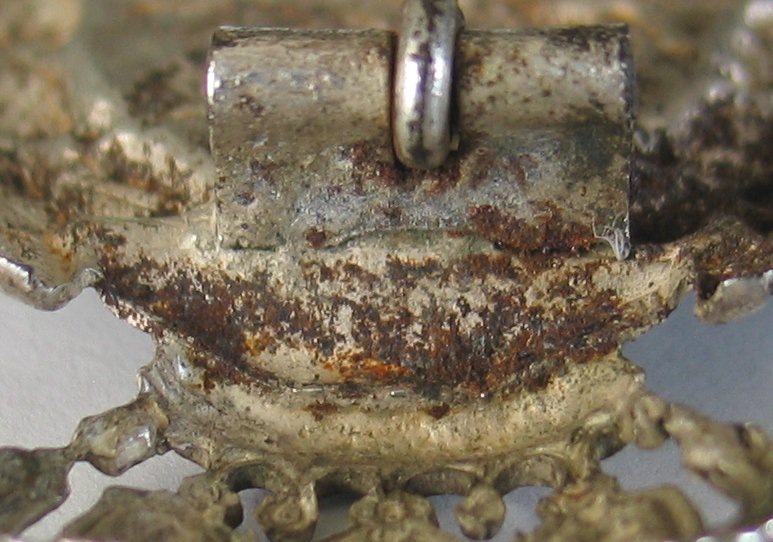
 0
0 -
Now the interesting part. The crown. Here's a shot of the obverse looking up. You can clearly see that the crown is a separately applied piece. Looks like it has been neatly soldered on (not lead solder) and you can see the remains of plated silver finish over it. Also intersting to note is tha the badge is steel/iron, whereas the crown is tombak. The plating on the badge and the crown appears to match. Also note there is a crack in the base of the right hand arm of the crown....
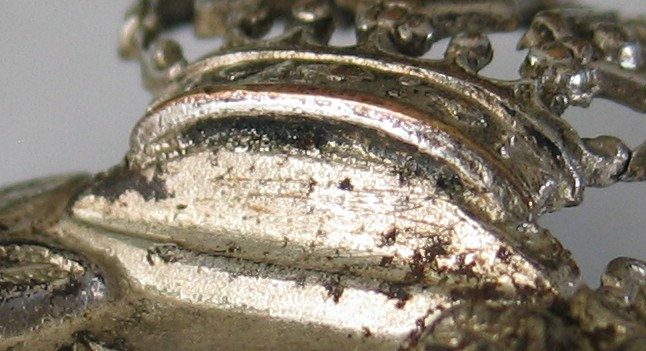
 0
0 -
Reverse - badge was tilted a bit, hence blurry left of the pin...
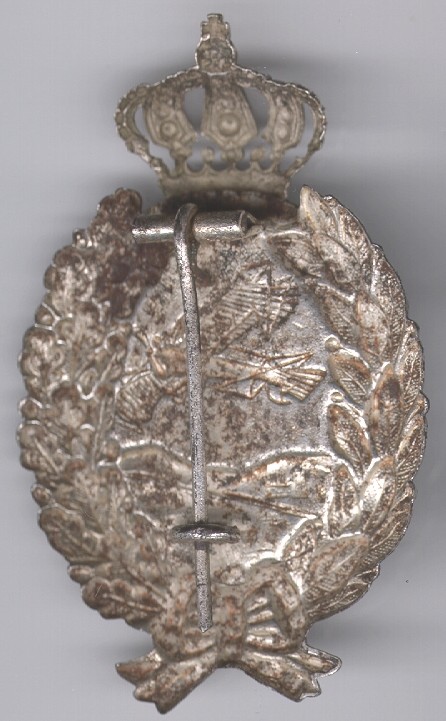
 0
0 -
G'day Rick,
Thanks for your reply. That's what I would accept as textbook, but then this one came along.
I'll load a few pics of a recently arrived cliche Bavarian Pilot's Badge, with some commentary, and will be interested in further thoughts.
Regards
Mike
First up, obverse scan - detail is very good....
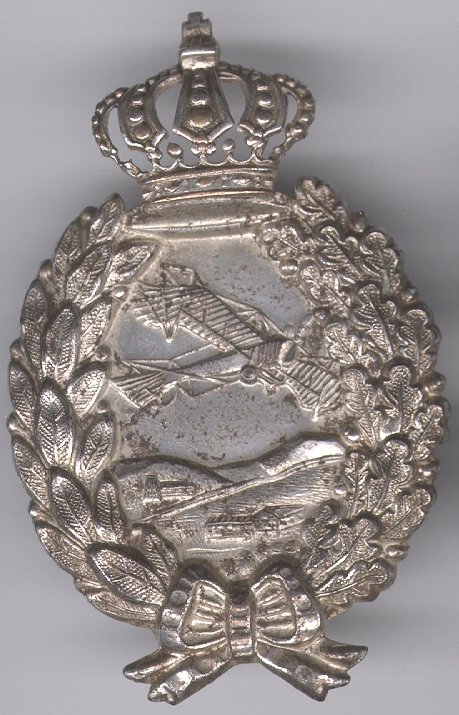
 0
0 -
Hi,
A question on cliche (ie hollow stamped, from Iron or other materials) Pilot's (or Observer's) Badges; I recall reading/hearing somewhere that some examples had a separately applied crown. Does anyone have any more definitive knowledge or experience - one way or the other - of the existence of such badges? If so, does anyone have an example to post?
Regards
Mike
0 -
....which I thought was pretty conclusive!
Note the date on the invoice. The item that came with the invoice in the auction was a scewback EK - unfortunately I didn't win the auction.
Regarding AWS logos on 1914 EK1s, here the logo on my example, which is still the least worn example I have yet to find.
Regards
Mike
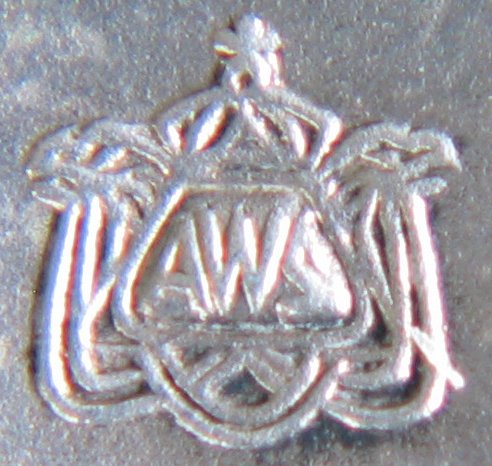
 0
0 -
....however those two bits of evidence were not 100% definitive - at least until I found the following partial image of an old invoice on eBay.....
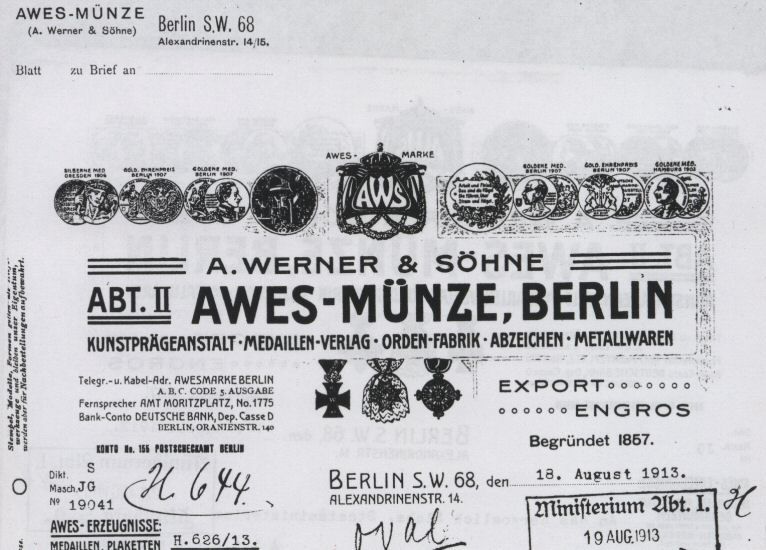
 0
0 -
....came in a case with the following label attached with old horse-hair glue....
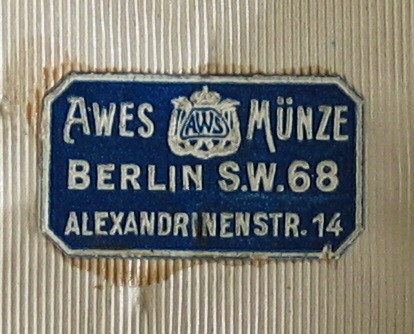
 0
0 -
Hi,
Bob, I'm looking forward to an upright Christmas and watching Santa arrive on his surfboard

OK, re proof, I present the following over the next few posts;
This cross, with the marking enlarged....
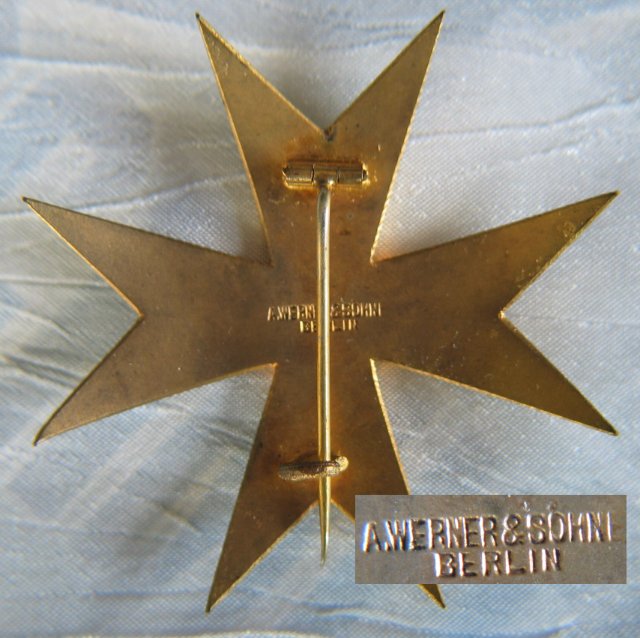
 0
0 -
I would guess these were left over cases used for 57s?
Yes, I agree with Dave - my 57er case (also have an early cased 57er KVK1 with the same type case) is most likely left over WW2 stock. Thye both have the raised pressed markings and horse/bone glue.
Regards
Mike K
0 -
Hi Chris,
Yes, this type is around. I have one that came with a LW PO grouping. I also have one that came with an early 57er!
Regards
Mike K
0 -
Hi,
Great thread with some very nice (and some ugly) examples!
My single contribution to follow. Nice enamel work and heavy hinge/pin/catch but no rivets or maker mark.
Regards
Mike K
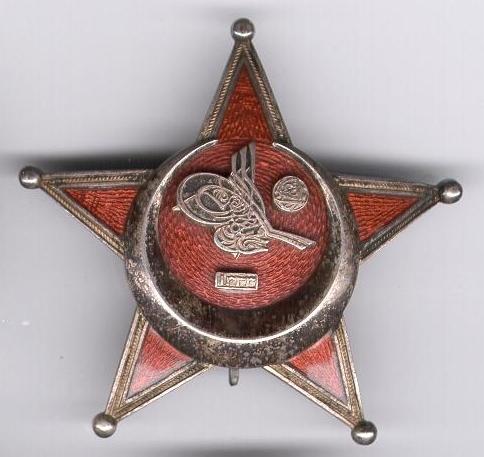


 0
0 -
Hi Daniel,
I don't own an example (yet), but I've seen pics of 1914 EK1s with a definite "We" mark (capital W).
Regards
Mike
0 -
Hi,
It looks like a nice example of slightly ?vaulted and less commonly "3" marked Deumer. The reverse assembly is spot on. I think you are safe with this one.
Regards
Mike K
0 -
Hi Greg,
Nice to see you over here as well!
Regards
Mike K
0 -
Hi Rick,
In general, that is correct - the non-68 marked badges are "buntmetal", the "68" badges are zinc.
There is one definite exception to the rule - there exist genuine zinc Juncker Heer Flak Badges with the "early" non-68 maker mark. I've seen discussions on "68" marked tombak LW Flak Bagdes and there may be some Heer Para badge or flight clasp/spange exceptions as well.
Regards
Mike K
Here's an example;
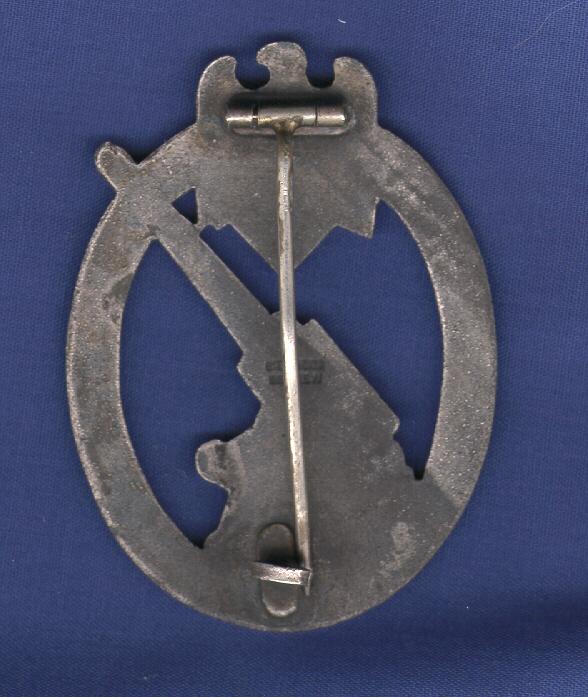
 0
0 -
Hi,
John, that's an exceptionall nice example - and with provenance

Rick, yes, the mark is very different from the previous marks. It was almost certainly made from scratch and used a different font. Fortunately for us collectors, the fakers choose to use this mark on their high quality basemetal fakes, making fake identification a lot easier for us.
The SW 68 mark can also be founf on zinc Pilot and P/O badges (I may have seen it on an zinc Observer too), as well as zinc Heer Flak badges to name a few more.
Regards
Mike K
0 -
Hi,
Interesting cross. I have no problems with the obverse - looks good. I have serious doubts about the hinge and pin though. Post#5 shows a clear side pic of the hinge and that is not what I would expect from wartime, 20s or 30s construction. The severe beveling on the edges of the pin I also consider highly unusual on a period example (but known from one type of recent Eastern European fake). I have a strong suspicion the hinge and pin are replacements.
Regards
Mike K
0 -
Hi,
Bob, be careful back at you! I can proove the AWS logo as seen in this thread belongs to A. Werner & Sohn Berlin. Can you proove the A.W.S. initials on WK2 PKAs belongs to Arno Walpach?

Nice examples in this thread, especially 925 marked that broad pin example!
The one at the top of the thread looks more like a silver plated example though?
Regards
Mike K
0 -
Hi,
Joe, that's an exceptionally nice example of a very hard to find variant! I've seen that "laquer" effect on very few 1914 EK1s and personally I think it is more of an echt silver plating over solid silver frame(s).
Marshall, that "oval" hingeplate looks like something I'd expect from a "WS" example - same for the core. That's a flat cross, correct? It's looking like more "interbreeding" between EK manufacturers! Assuming that maker mark hasn't been added more recently to increase value.
Rick, I too would love to see the obverse of your Turkish Star. I'd expect superior enameling.
The only other Werner marked example I have in my collection is a Prussian RAO 4th class on tri-fold ribbon - marked J.H.W. on the lower arm. I don't think there would be too many manufacturers with those initials.
Here's my EK1 example. It also marked under the hinge with a roman numeral, from memory a number between 14 and 18 because initially I thought it may have been the year of manufacture - that is obviously not the case. It's well worn and each outer corner has been bent over slightly, I assume for additional "grip" onto a uniform.
Regards
Mike K
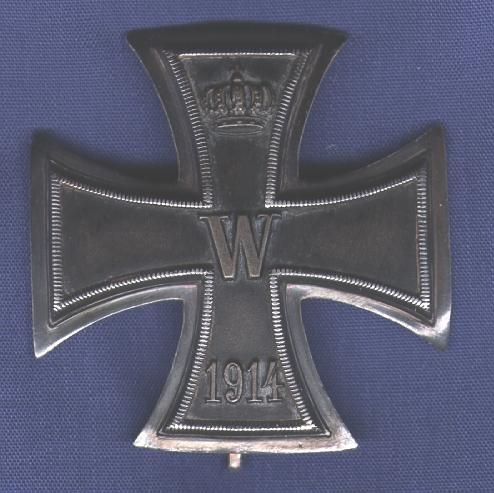
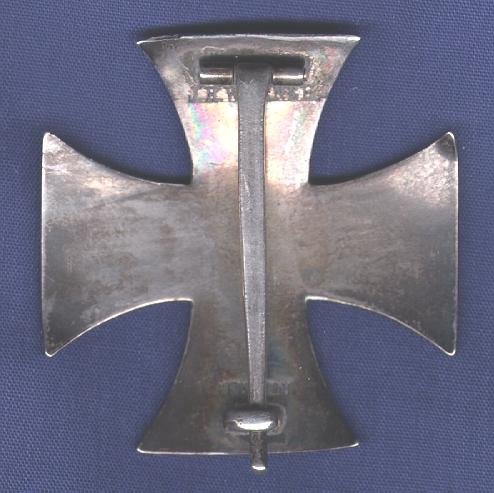

 0
0 -
Hi Joe,
Nice one! Interesting to note that Juncker did not use the anti-spin pin, nor the typical "puffy" crown core (as found on cores by many other makers) on their WW2 produced 1914EK1s.
Regards
Mike K
0 -
Hi,
I'm pretty sure that there is an "M. Hansen" marked example in Bowen's EK book - I'm certain that the "M. Hansen" marking is mentioned in his incomplete listing though. That puts the M. Hansen mark in the public domain since at least the mid 80s.
It was interesting to note that the some M. Hansen markings from the hoard were at different angles but this does not necessarily mean it was added at a different time, just that it was applied with a separate punch (not unknown - look at Poellath flight badge markings). Whether the absence of the "M. Hansen" specifically means it was made for a third party, or was simply not marked? Were 100% of items made for sale by any company marked? Probably not!
Regards
Mike K
0 -
Actually, I think that one is made of Tombak, which is a mix of brass and copper...Don
Hi,
I'd agree with Don's evaluation - looks like patinated tombak to me. A nice honest example though! The only pure copper badges I've seen have been repros.
Regards
Mike K
0 -
Hi,
Imo two nice honest crosses imaged in this thread but they are definitely not from the same maker - cores (crowns, Ws and dates) are way different for a start. Beading on the frames also appears different. Jens, I'm not at home so I can't make any comparison with my examples to help you ID this one.
Dan, I like the rubbing theory - I've never really given wear patterns much thought but it makes a lot of sense!
Regards
Mike K
0


Cliche Pilot's Badge question
in Germany: Imperial: The Orders, Decorations and Medals of The Imperial German States
Posted
A rough side shot showing the hinge/pin/catch and "vault" of the crown...